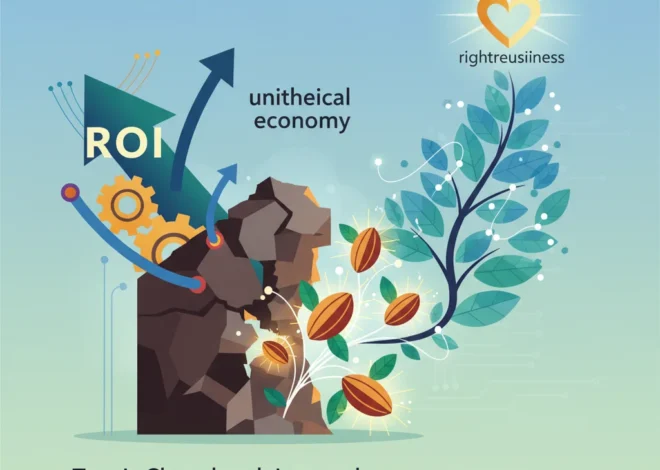
The Singh Twins’ Blueprint: What Ancient Art Can Teach Modern Investors
In the world of finance, we are conditioned to look for value in balance sheets, stock market trends, and economic forecasts. We build complex models to predict quarterly earnings and scrutinize every move of the central banking authorities. But what if some of the most profound lessons in value creation, brand building, and market disruption aren’t found in a prospectus, but in a painting? Enter The Singh Twins, British artists whose intricate, vibrant work is challenging not only the conventions of the art world but also our understanding of what constitutes a valuable asset in the 21st-century economy.
Amrit and Rabindra Kaur Singh, professionally known as The Singh Twins, have carved a unique niche by revitalizing the ancient tradition of Indian miniature painting. They call their style ‘past modern’—a deliberate fusion of a centuries-old aesthetic with contemporary themes, from global politics to pop culture. Their work is a dense tapestry of historical reference and modern commentary, demanding close inspection. And as their profile rises, with a major exhibition at London’s Kew Gardens, it offers a compelling case study for investors, business leaders, and anyone navigating the complexities of modern finance.
Decoding the “Past Modern” Portfolio: Art as an Alternative Asset
From an investment perspective, the art market has always been an intriguing, if opaque, alternative to the traditional stock market. While stocks are valued on metrics like P/E ratios and dividend yields, art valuation is a more nuanced blend of provenance, artist reputation, historical significance, and aesthetic appeal. The Singh Twins’ career provides a masterclass in building this intangible value.
Their “twindividual” identity—working so collaboratively that their art is attributed to a single, joint entity—is a powerful branding tool, creating a unique and memorable signature in a crowded market. This isn’t just an artistic quirk; it’s a strategic moat. In the world of finance, we look for companies with a durable competitive advantage. The Singh Twins have built one through their unique style and collaborative identity, making their work instantly recognizable and difficult to replicate. This strategy has paid dividends, securing them a place in esteemed collections and elevating the financial and cultural capital of their portfolio.
Unlike the high-frequency trading that defines much of today’s financial landscape, investing in art is a long-term play. It requires patience, deep domain knowledge, and an appreciation for narrative. The twins’ commitment to reviving a traditional art form, a craft that requires immense skill and time, is a powerful reminder that enduring value is often built slowly and meticulously, far from the market’s quarterly pressures.
A Fintech Parallel: Disrupting Tradition from Within
The core of The Singh Twins’ innovation lies in their ‘past modern’ approach. They didn’t abandon the tradition of Indian miniature painting; they repurposed its grammar and syntax to tell new stories. They respected the “legacy system” while integrating modern functionality and relevance. This is a perfect parallel to the revolution we’ve witnessed in financial technology.
Consider the world of banking before the rise of fintech. It was a rigid, slow-moving industry built on centuries of tradition. Fintech innovators didn’t tear it all down. Instead, they built on top of existing infrastructure, using technology to make services faster, more accessible, and user-centric. They took the core principles of finance and reimagined the user experience. Similarly, The Singh Twins use a visual language developed in the 16th century to comment on 21st-century consumerism, political conflict, and digital life. They are, in essence, the fintech of the art world—disruptors who honor the past to redefine the future.
This approach offers a crucial lesson for any industry facing disruption. The most successful innovations often don’t come from a complete rejection of the old, but from a clever and insightful synthesis of the old and the new. This is a principle that applies as much to the development of a new trading algorithm as it does to the composition of a painting.
To better illustrate this parallel, consider how the strategic principles behind The Singh Twins’ artistic success mirror established tenets of sound investing and business strategy.
| Modern Investment Principle | The Singh Twins’ Artistic Strategy |
|---|---|
| Diversification | Blending diverse cultural influences (Indian, Persian, Western) and thematic elements (history, politics, pop culture) to create a resilient and multi-layered asset. |
| Building a “Moat” | Developing a unique, inimitable ‘past modern’ style and “twindividual” brand that protects their market position from competitors. |
| Long-Term Value Investing | Committing to a time-intensive, highly skilled traditional art form, focusing on creating enduring cultural value over short-term trends. A testament to patience. |
| Market Disruption (Fintech Model) | Innovating within a traditional framework (miniature painting) to address contemporary audiences and themes, much like fintech modernizing traditional banking. |
| Strong Narrative & Thesis | Embedding every piece with a compelling story and clear point of view, increasing engagement and perceived value beyond the purely aesthetic. |
The Economics of Storytelling
Every artwork by The Singh Twins tells a story. Their canvases are crowded with details, each a sub-plot contributing to a larger narrative. This emphasis on storytelling is perhaps the most critical lesson for the modern financial world. An investment is more than numbers on a screen; it’s a stake in a story about the future. A company’s stock price is not just a reflection of its current earnings but a collective belief in its future narrative of growth and innovation.
Effective leaders and investors are, at their core, great storytellers. They can weave a compelling narrative from disparate data points, economic indicators, and market trends. The Singh Twins demonstrate that a powerful story, skillfully told, can transform a traditional medium into something profoundly modern and valuable. Their success, as noted by the Financial Times, in making “Indian miniatures a big deal” (source), is a testament to their mastery of narrative. For anyone in finance, trading, or business, the ability to craft and communicate a convincing story is an invaluable, and often underestimated, asset.
Actionable Insights for the Modern Investor
So, what are the tangible takeaways from the art of The Singh Twins for those of us focused on the economy and financial markets?
- Look for Value in Niches: The twins didn’t try to compete in the crowded market of mainstream contemporary art. They identified a neglected niche and redefined it. In investing, the greatest returns are often found not by following the herd, but by identifying undervalued or overlooked asset classes and sectors.
- Appreciate the Power of the Brand: A strong, authentic brand is a significant intangible asset. When evaluating a company, look beyond the balance sheet to the strength of its brand, its story, and its connection with its audience.
- Embrace “Past Modern” Thinking: The most resilient strategies blend proven principles with forward-looking innovation. Whether you are in wealth management, corporate finance, or tech, understand the foundational “legacy systems” of your industry while aggressively exploring how new technologies can enhance them.
The journey of The Singh Twins from art students to internationally recognized artists is a powerful lesson in economics, branding, and strategy. It reminds us that the principles of creating value are universal. By looking beyond the familiar charts and reports of the financial world, we can find inspiration and insight in the most unexpected of places—proving that sometimes, the best guide to future growth can be found within the intricate, gilded borders of a miniature painting.

